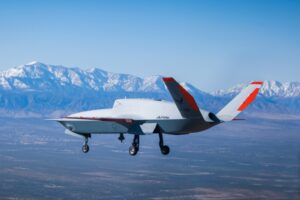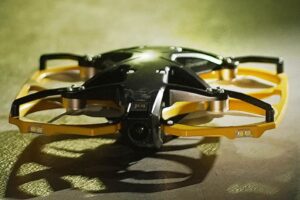Reality capture, the process of creating digital representations of real-world environments, has become increasingly crucial in various sectors, from construction and engineering to filmmaking and environmental monitoring. As far as actually making it happen, drones for reality capture have become an increasingly common tool. After all, a drone equipped with a specialized sensors can offer mobility, accessibility, and detailed data collection.
Sp what drones are people actually using for reality capture? San Francisco-based drone mapping software company DroneDeploy surveyed 1,447 users from 119 countries across 13 industries in mid-2023 to find out.
Here were the top 10 sensors or complete drones for reality capture in 2024, sorted with the most popular drone or sensor listed first:
- DJI Mavic 3E
- DJI Zenmuse P1
- DJI Mavic 2 Pro
- DJI Phantom 4 Pro
- DJI Air 2S
- DJI Phantom 4 RTK
- DJI Mavic 3T
- Sensefly SODA
- Sony RX1
- Skydio 2+

DJI dominates the field of drones for reality capture
DJI, the world’s leading drone manufacturer, also occupies a dominant position in the reality capture space. The top seven drones and sensors on DroneDeploy’s list all come from Chinese drone maker DJI.
The roughly-$4,000 DJI Mavic 3E stands out as the far and away leader in the field of drones for reality capture.
Released in October 2022, the DJI Mavic 3 Enterprise took the existing Mavic 3 and effectively gave it some commercial-grade drone steroids. Standout features of the Mavic 3 Enterprise include:
- 56× zoom camera
- 45 minute flight time
- 100W fast charging and a three-battery 100W charging station
- RTK module
That RTK module is perhaps the most standout, as such a tool is critical for centimeter-level precision while conducting surveys. (RTK is short for Real-Time Kinematic.) This particular RTK module supports network RTK, custom network RTK services, and D-RTK 2 Mobile Station (that’s DJI’s upgraded high-precision GNSS receiver that supports all major global satellite navigation systems, providing real-time differential corrections).
Here’s where it gets interesting though. About 56% of Mavic 3E RTK users aren’t even using the RTK module, according to DroneDeploy’s report.
Two other interesting names on the top 10 list? The Mavic 2 Pro and the DJI Air 2S. Both are primarily camera drones — and both are quite affordable. The Air 2S often goes for less than $900 these days, while the Mavic 2 Pro is still generally wallet-friendly at about $2,000.
Though, there are some high-end DJI products on the list too. The second name on DroneDeploy’s list of most popular drones and sensors in 2023 is the Zenmuse P1, which is a high-precision mapping payload.
Additionally, the Mavic 3T, Phantom 4 Pro and Phantom 4 RTK round out their comprehensive offerings, catering to specific applications like thermal imaging and high-accuracy surveying. Many consider the Phantom 4 Pro the reigning king of photogrammetry. And the Mavic 3T is also a compelling pick. Featuring a dual thermal imaging camera, that drone is ideal for capturing thermal data for applications like infrastructure inspection, search and rescue, and environmental monitoring.
What DJI alternatives are used in reality capture?
DJI dominates, but there are other drone makers out there. In some ways, it’s compelling to see so many DJI drones at the top of DroneDeploy’s top 10 list. That’s especially compelling given how geopolitical tensions and security concerns have fueled anti-China sentiment. Those concerns have somewhat severely impacted the drone market.
In fact, the House introduced the Countering CCP Drones Act in April 2023, which could ban DJI drones if passed. In a similar vein, Utah Sen. Mitt Romney co-sponsored the American Security Drone Act of 2023. That bipartisan bill would prohibit federal agencies from purchasing drones made by Chinese government-linked countries.
Though while many organizations and governments are increasingly hesitant to use Chinese-made drones due to potential data security risks (and potential bans), it seems to be not enough to shake DJI’s top spot.
Then again, this shift has opened opportunities for non-Chinese manufacturers, like Sensefly, Sony and Skydio. Though, only one single American drone maker has a spot on the top 10 list, and that’s the Skydio 2+ drone.
- Sensefly SODA: This Swiss manufacturer focuses on professional mapping solutions. Their SODA drone is known for its rugged design, long flight times, and compatibility with various sensors, making it ideal for large-scale mapping projects.
- Sony RX1: While not strictly a drone company, Sony is becoming a leader in the drone space. Sony’s high-resolution RX1 series cameras often pair with custom drone platforms. Those drones then capture incredibly detailed imagery, particularly valuable for architectural and heritage documentation. In fact, Sony manufactures its own drone called the Airpeak S1, which is a popular tool in industrial inspections. Other great drones for carrying Sony cameras include the Skyfish drones. Skyfish is an American drone company based in Montana.
- Skydio 2+: This American company takes a unique approach with its autonomous drones. The Skydio 2+ utilizes advanced AI to navigate complex environments without a pilot. With that comes a hands-free option for reality capture tasks. Skydio has been generating huge government interest. In fact, it’s created enough hype to compel Deputy Secretary of Defense Kathleen Hicks to pay the company a visit.
Choosing the right tools for reality capture
The phrase ‘reality capture’ encompasses not just drones, but other tools like ground robots and 360 cameras. It’s a field DroneDeploy has leaned into as of late as the company diversifies its portfolio of offerings beyond drones.
“At a high level, what we’re seeing is that tools like drones, robots and 360 cameras will no longer be viewed or used in isolation,” according to DroneDeploy’s State of Reality Capture 2024 report. “They will work together on the jobsite, field or energy plant of the future.”
Unsurprisingly, DroneDeploy is shaping its business to align with that view. For example, DroneDeploy acquired Rocos, a New Zealand-based robotics software company for job site automation, in summer 2021. Also that year, it heavily ramped up its 360 Walkthrough product. 360 Walkthrough was designed to help streamline customers’ documentation of exterior and interior. It generates 360-degree maps and puts it into a single-platform. From there, it provides a way to collaborate and share data gathered from both aerial and ground robots.
So which should you use? Some projects rely on just drones. That includes applications like inspecting or mapping a wind turbine that’s posted high up in the air. Some might use just ground robots. After all, ground robots aren’t subject to FAA rules and don’t necessitate a drone pilot’s license, registration or remote ID compliance.
But no matter what drone you’ve chosen, you’re likely in a field that’s growing — and has a lucrative financial angle. And in some sectors, it’s already big. For example, 75% of respondents in the DroneDeploy survey who work in the fields of enterprise architecture, engineering or construction (AEC) said their business is already using reality capture software. Similarly, 60% of survey respondents in the oil and gas fields said their business is using reality capture software.
“Just a decade ago, drones were a niche hobbyist toy,” according to the DroneDeploy report. “Now they’re a critical tool for businesses.”
The post Top sensors and drones for reality capture in 2024 appeared first on The Drone Girl.







